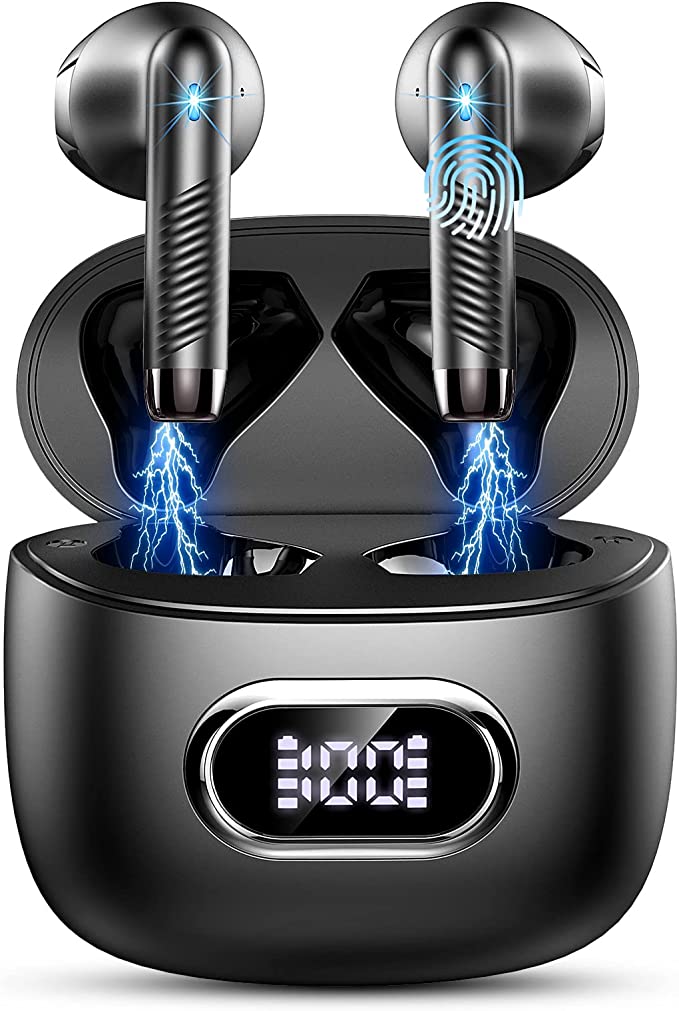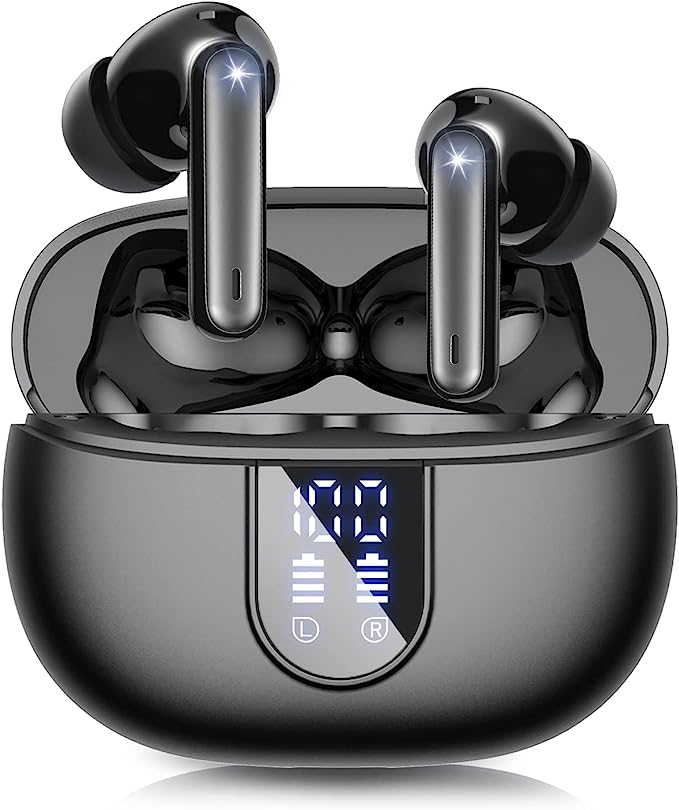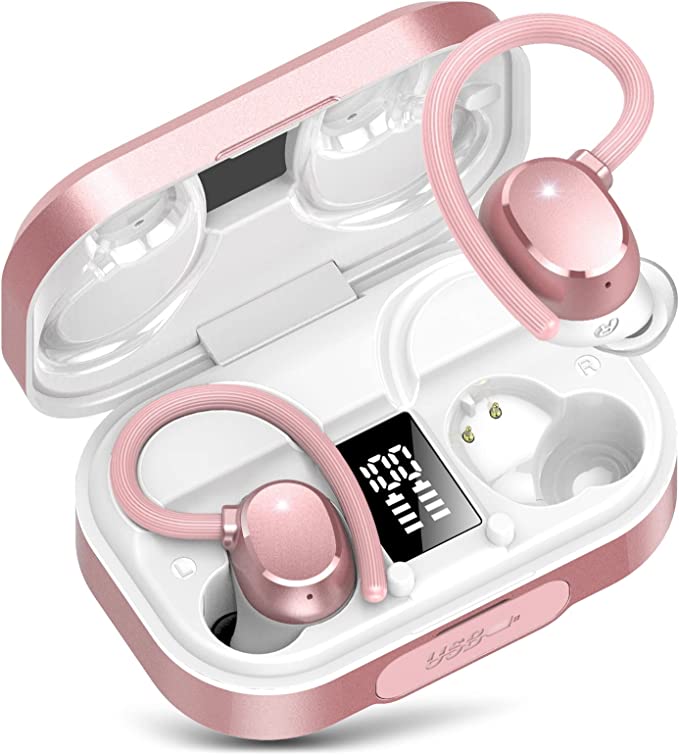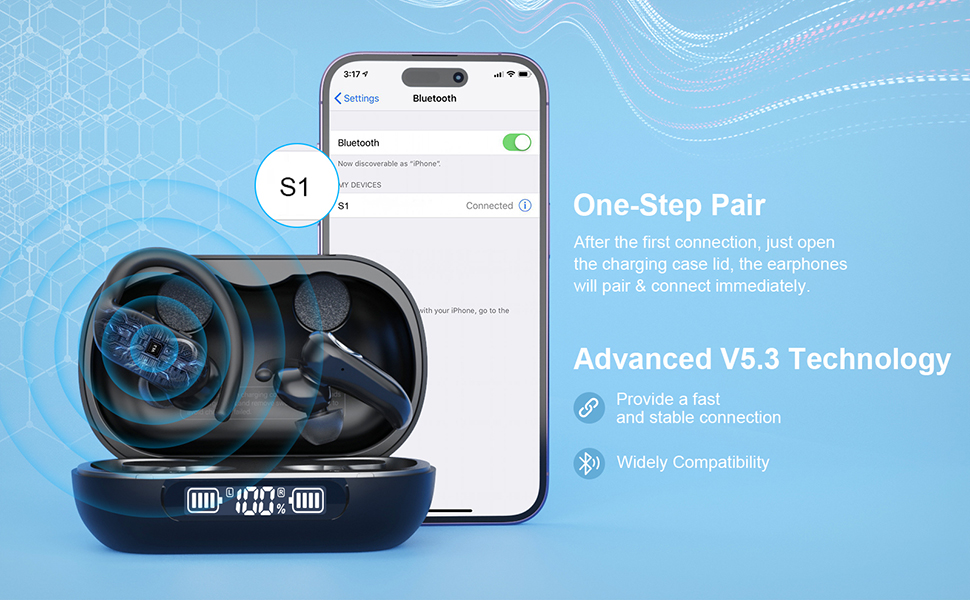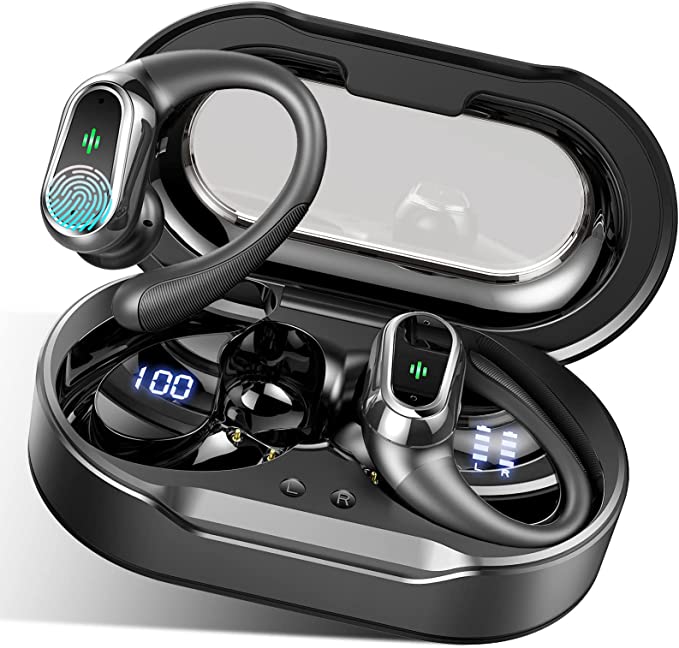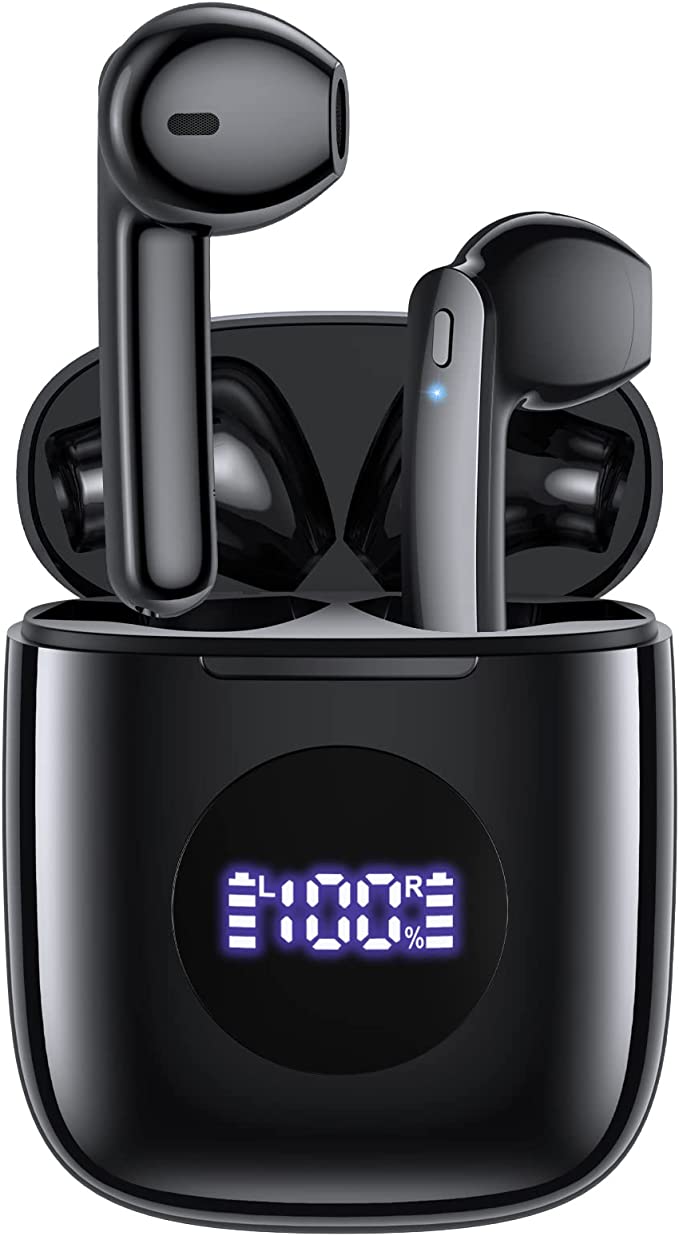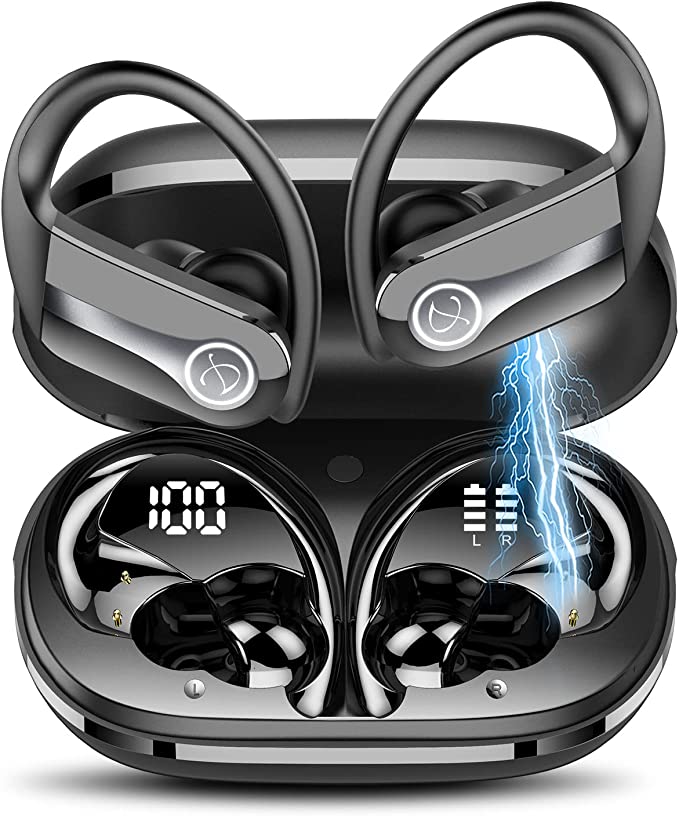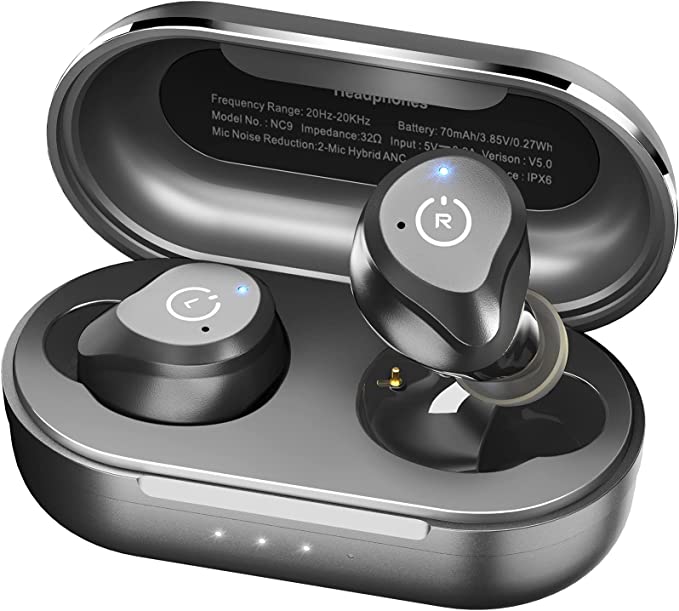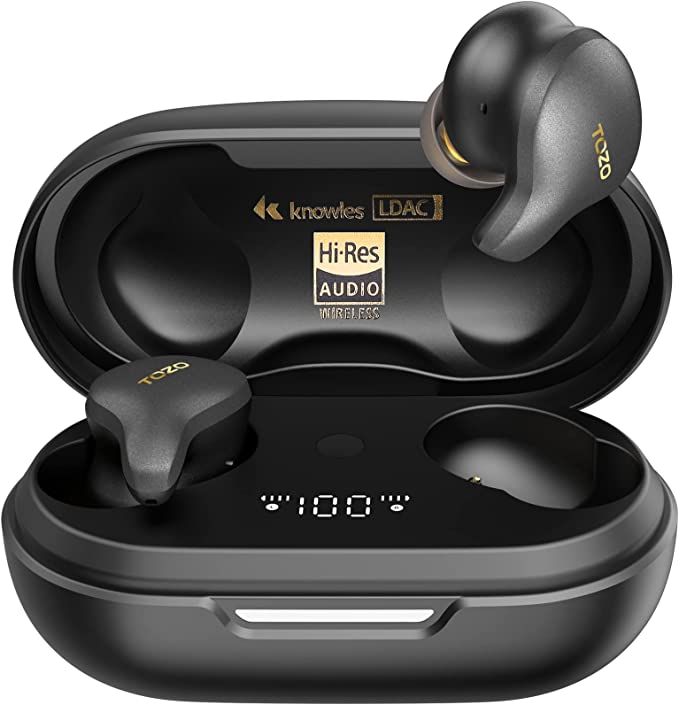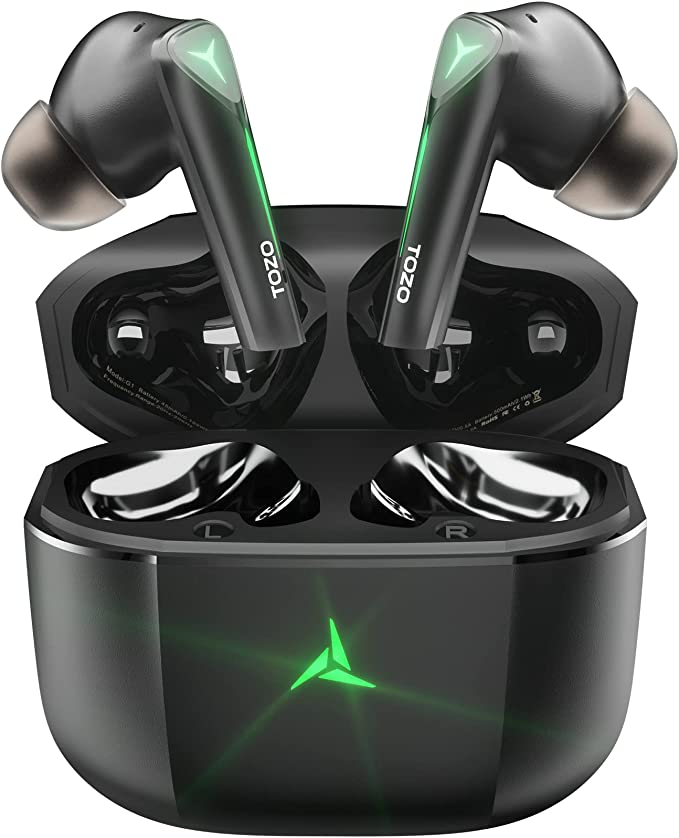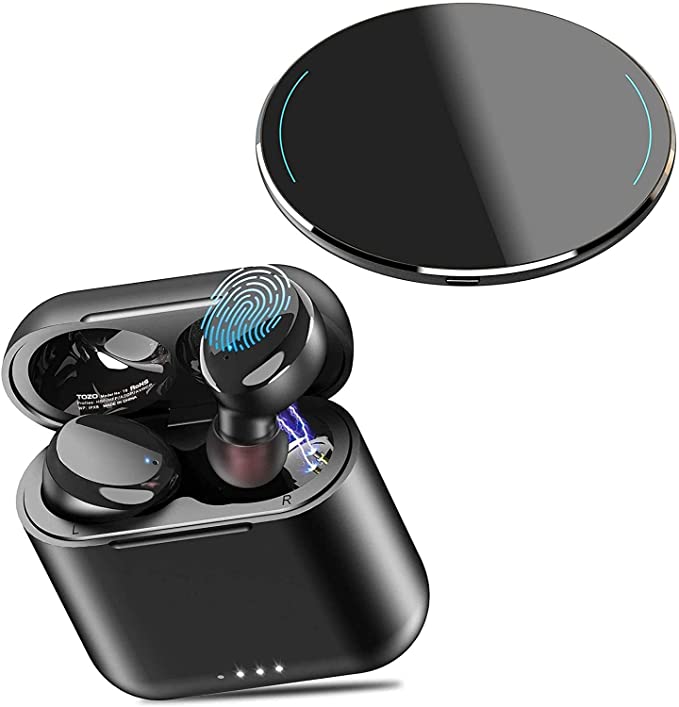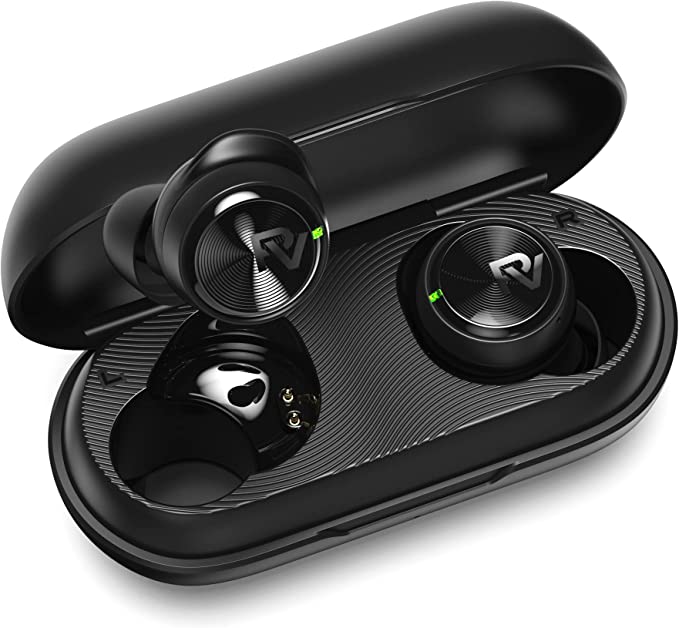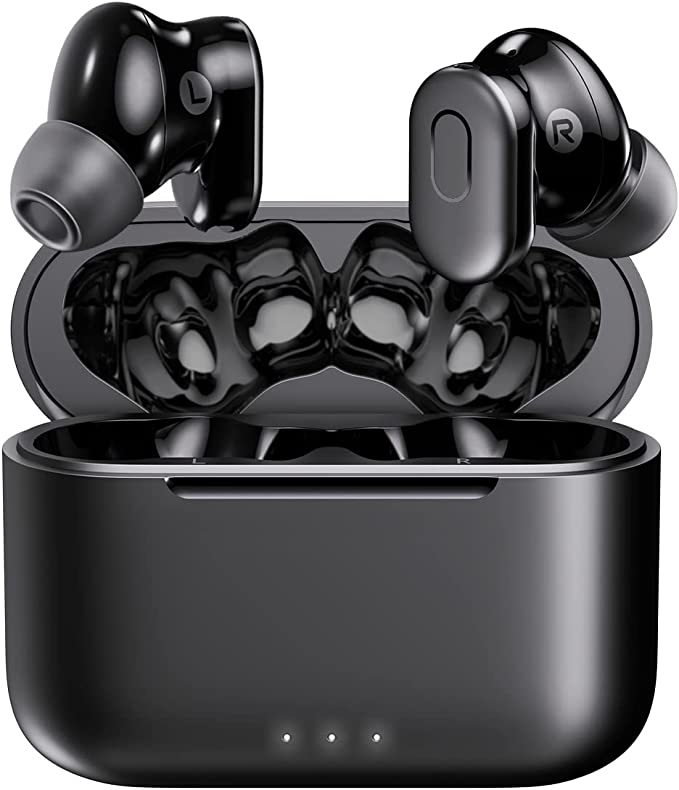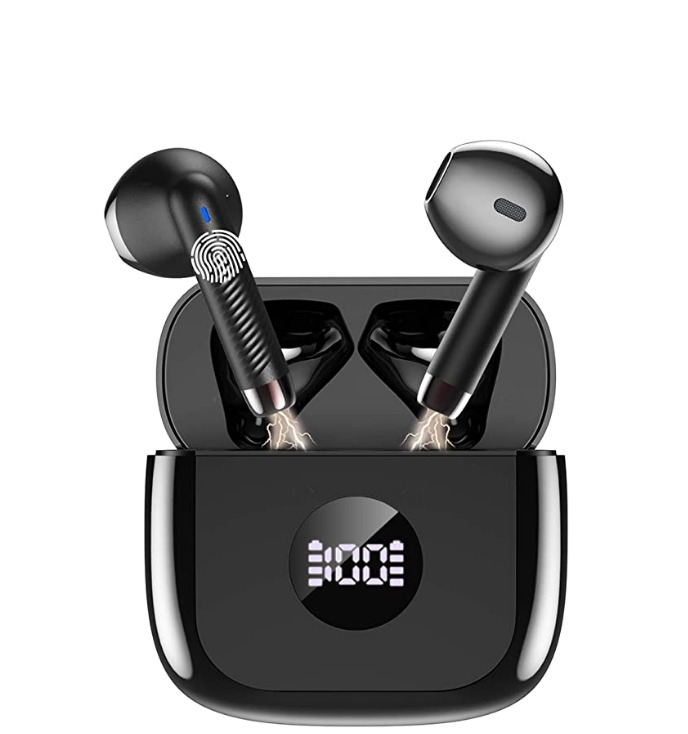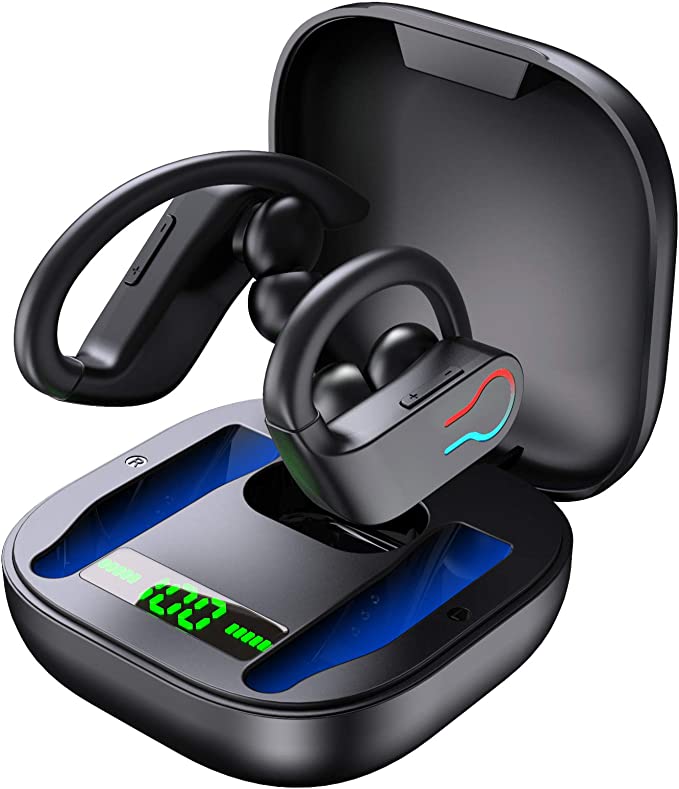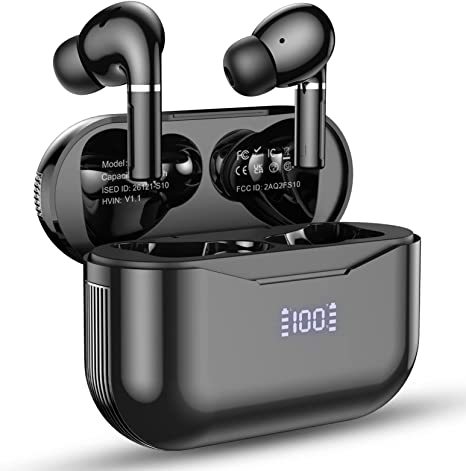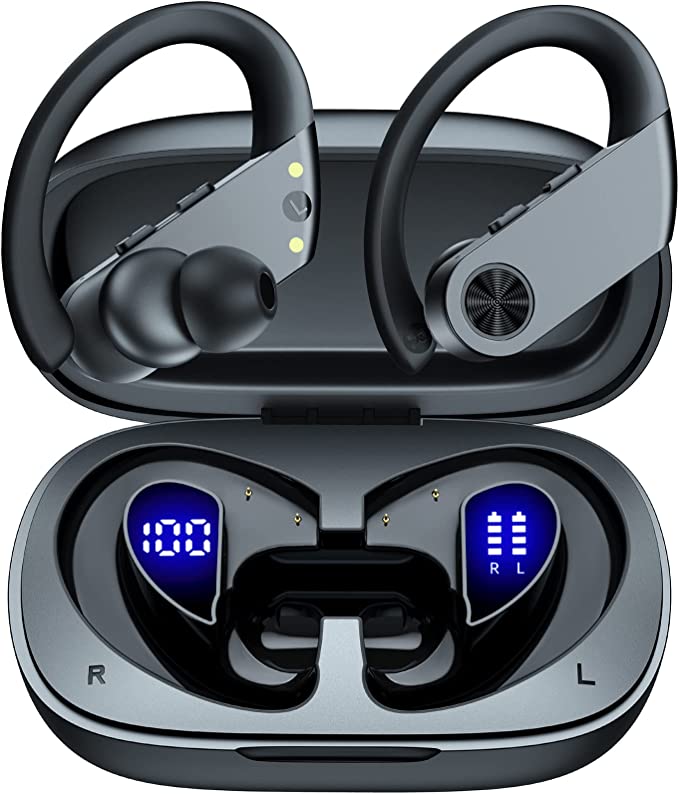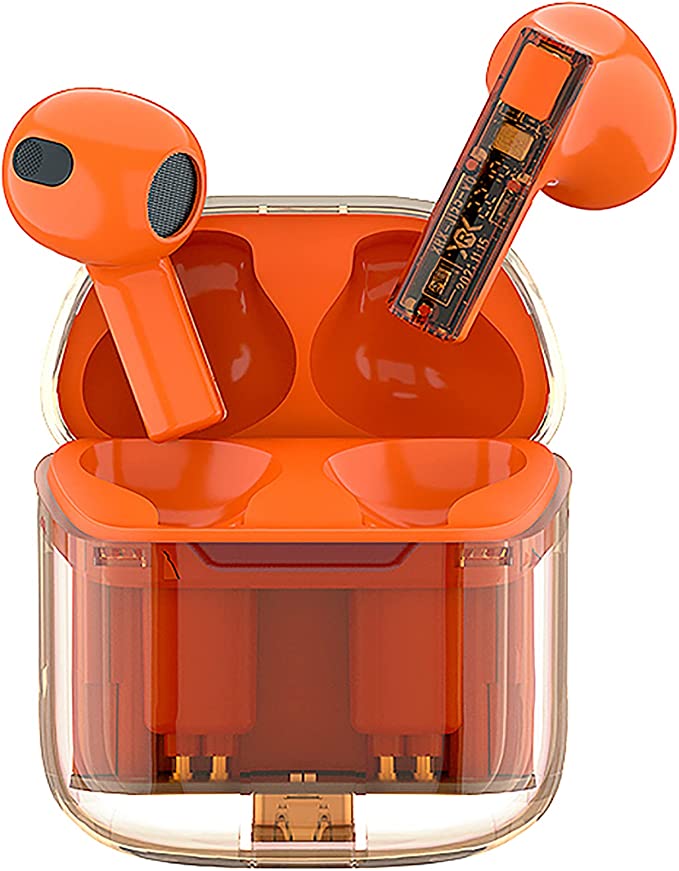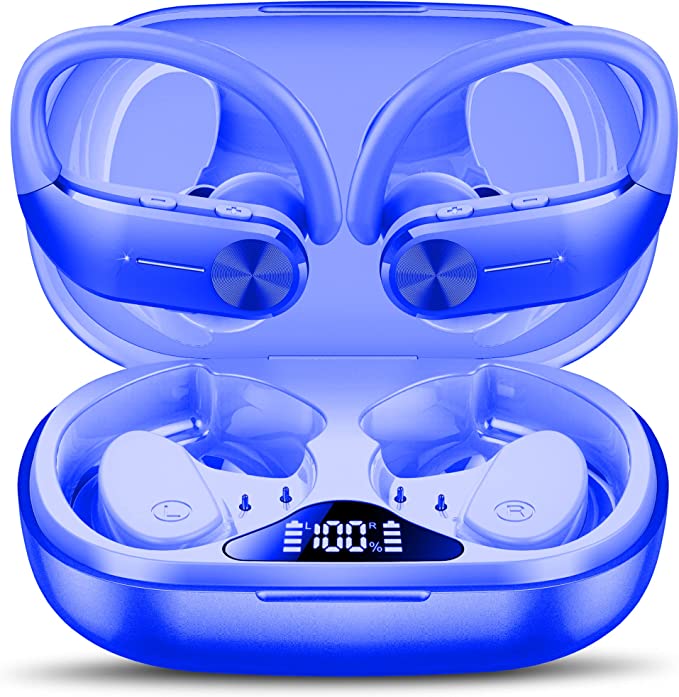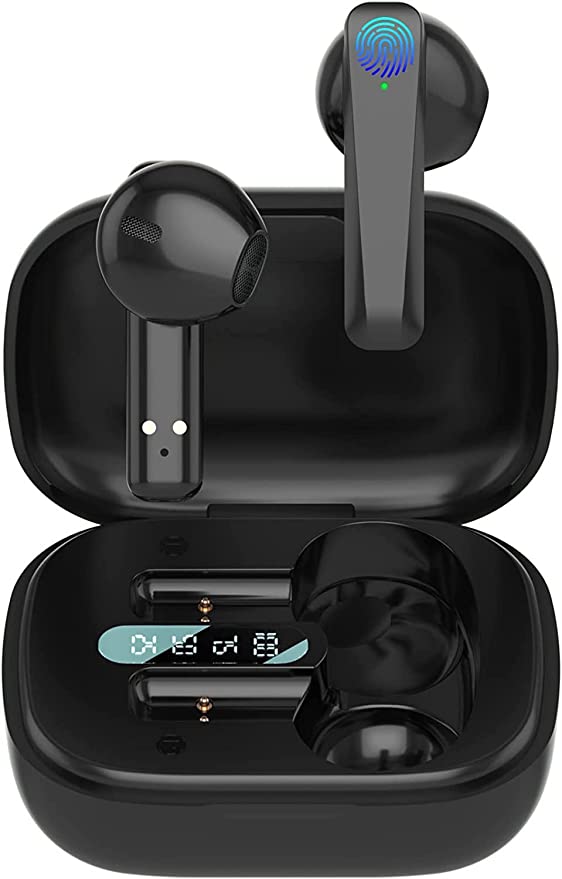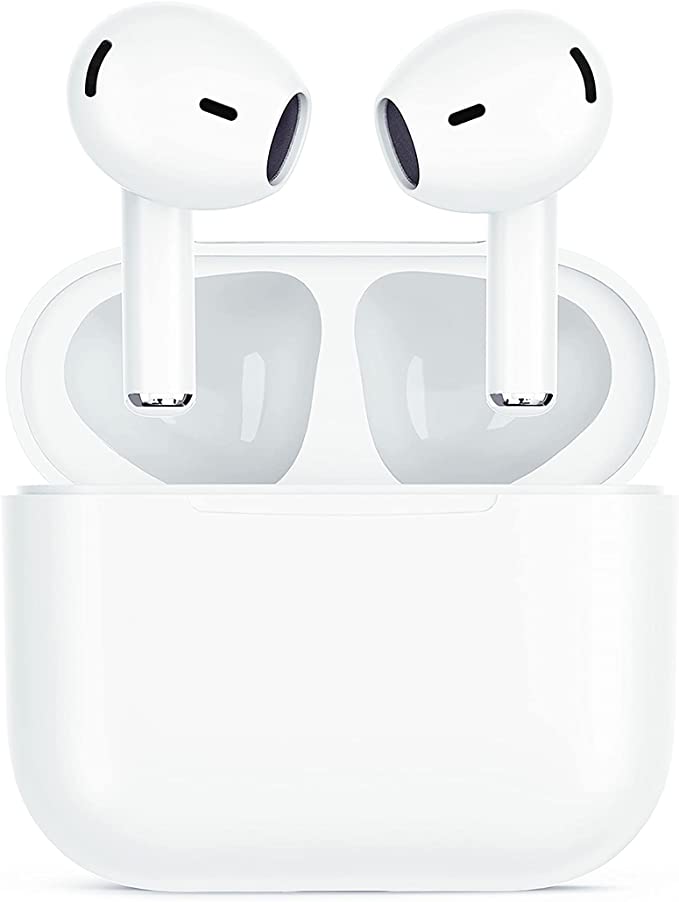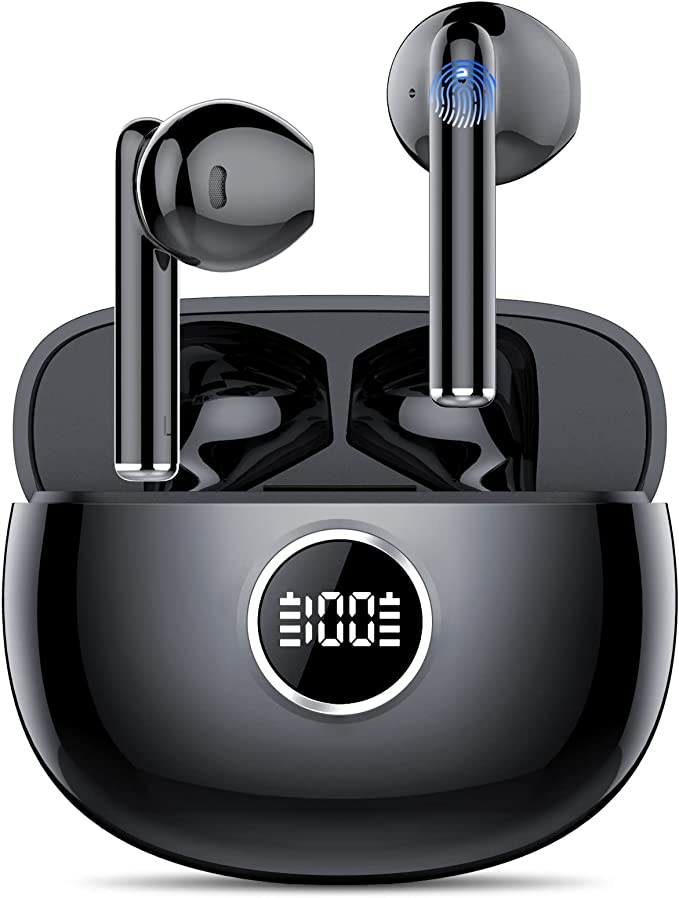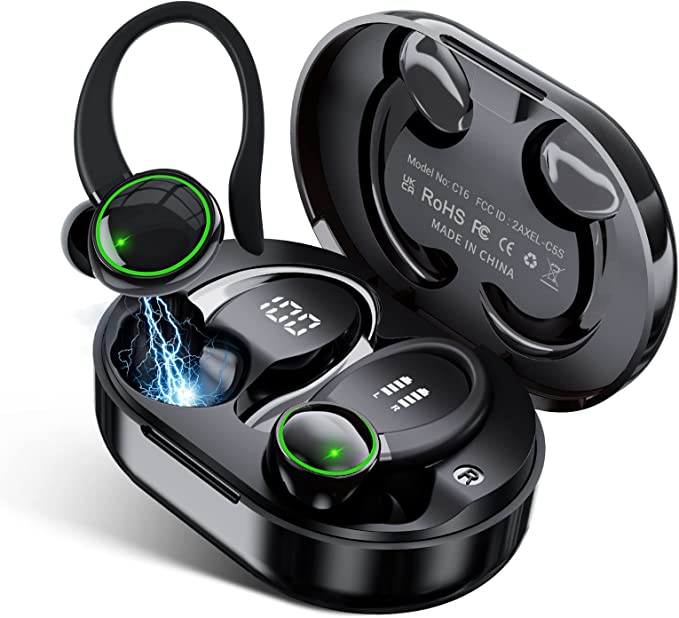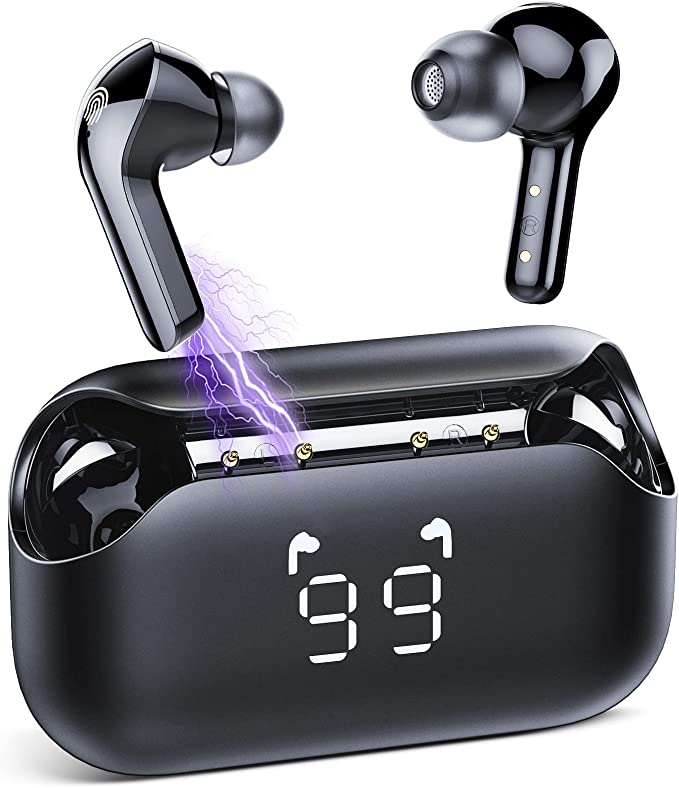ANINUALE R8 Wireless Earbuds - Convenient and High-Quality Bluetooth Earbuds
Update on May 29, 2025, 6:39 p.m.
In our hyper-connected world, wireless earbuds have evolved from a mere convenience to an almost indispensable extension of our digital lives. They accompany us on morning jogs, soundtrack our commutes, and keep us connected through calls and virtual meetings. The ANINUALE R8 Wireless Earbuds, with their roster of features, offer a fascinating window into the sophisticated science and engineering packed into these compact audio companions. Let’s peel back the layers and explore the technological marvels that aim to deliver your daily soundscape.

The Marathon Runner: Decoding 70 Hours of Uninterrupted Audio
Few things are more frustrating than your music dying mid-workout or during a crucial call. The promise of up to 70 hours of total playtime from the ANINUALE R8 – 10 hours from the earbuds themselves and an additional 60 from their charging case – speaks to significant advancements in power management. But what’s the science behind this auditory endurance?
At the core, or perhaps the “Lithium-Ion Heartbeat,” of this longevity are the rechargeable lithium-ion batteries housed within both the earbuds and the case. These aren’t your grandad’s nickel-cadmium cells. Lithium-ion technology, which became commercially viable in the early 1990s thanks to the pioneering work of scientists like John Goodenough, M. Stanley Whittingham, and Akira Yoshino (work that earned them the 2019 Nobel Prize in Chemistry), offers a high energy density. Think of it like a tiny fuel tank that can store a lot of energy relative to its size and weight. This allows for smaller, lighter earbuds that can still play for extended periods. Furthermore, lithium-ion batteries generally lack the “memory effect” that plagued older battery types, meaning you don’t have to fully discharge them before recharging to maintain their capacity, and they can handle hundreds of charge-discharge cycles before significant degradation.
However, a good battery is only part of the equation. The efficiency of the components drawing power is equally crucial. Here, the “Bluetooth 5.3’s Sips, Not Gulps” approach comes into play. Each iteration of Bluetooth technology has strived for better power efficiency, and Bluetooth 5.3 includes enhancements within its Low Energy (LE) audio specifications. This means the wireless communication between your phone and the R8 earbuds is designed to consume minimal power, ensuring that the stored energy in those tiny batteries is stretched as far as possible. It’s like having an incredibly fuel-efficient engine in that high-capacity fuel tank.
Keeping track of this power is made straightforward by the LED digital display on the charging case. While seemingly a simple addition, this “Power at a Glance” feature is a practical piece of user-centric design. It provides a clear visual indication of the remaining charge in both the case and the earbuds themselves (via four independent indicators for the buds). This eliminates the guesswork and anxiety of unexpectedly running out of power, allowing you to plan recharges proactively.
And when it’s time to “Fuel Up Your Way,” the ANINUALE R8 offers flexibility with both wireless charging and USB-C. Wireless charging, often based on the Qi (pronounced “chee”) standard, utilizes the principle of electromagnetic induction. Coils in the charging pad create an oscillating magnetic field, which in turn induces a current in a corresponding coil within the earbud case, replenishing its battery without the need for cables. It’s a bit like a tiny, invisible power handshake. USB-C, on the other hand, is the modern wired standard, appreciated for its reversible connector (no more fumbling to plug it in the right way!) and its capability for faster power delivery compared to older USB types. This dual-charging capability caters to different user preferences and available infrastructure.

Crafting the Soundscape: Graphene, Stereo, and Voice Clarity
Ultimately, earbuds are about the audio experience. The ANINUALE R8 touts 8mm graphene drivers for a “Hi-Fi stereo effect” and a noise-reducing microphone for clearer calls.
The “Graphene’s Overture” refers to the use of graphene in the driver diaphragms. A driver is the component in an earbud that actually produces sound by vibrating to create sound waves. The diaphragm is the part of the driver that moves. Graphene, a single layer of carbon atoms arranged in a hexagonal lattice (first isolated by Andre Geim and Konstantin Novoselov at the University of Manchester in 2004, earning them the Nobel Prize in Physics in 2010), is a material with extraordinary properties. It’s incredibly strong (about 200 times stronger than steel of the same thickness), exceptionally lightweight, and an excellent conductor of electricity. For an audio diaphragm, these characteristics are highly desirable. Its lightness allows it to respond very quickly and precisely to the electrical signals representing the audio, while its stiffness helps it vibrate without unwanted distortion. This can translate into a more accurate sound reproduction across the frequency spectrum – potentially leading to crisp high notes, detailed mid-tones, and the deep, resonant bass that many listeners enjoy. The goal is to achieve high fidelity (Hi-Fi), meaning the sound you hear is as close as possible to the original recording.
“Painting with Sound,” or the Hi-Fi stereo effect, is achieved by delivering two independent audio channels, one to each ear. Our brains process the subtle differences in timing and intensity of sounds reaching each ear to create a sense of space and directionality. Stereo sound, a standard since the mid-20th century, aims to replicate this, providing a more immersive and realistic listening experience than monophonic (single-channel) audio.
For calls, “Cutting Through the Noise” is essential. The R8’s microphone system claims to reduce surrounding noise by about 90%. While the specific internal mechanics aren’t detailed in the provided information, noise reduction in earbud microphones often relies on a combination of acoustic design and signal processing. This might involve using directional microphones that are more sensitive to sound coming from the user’s mouth, or employing algorithms that analyze the incoming audio, identify patterns characteristic of steady background noise (like a fan or traffic hum), and attempt to subtract them from the signal, leaving the voice clearer for the listener on the other end.

The Unseen Handshake: Bluetooth 5.3 and the Art of Instant Connection
The wireless link is the invisible lifeline of these devices. The ANINUALE R8’s adoption of Bluetooth 5.3 is significant. Bluetooth technology, which traces its conceptual origins back to frequency-hopping spread spectrum technology co-invented by Hedy Lamarr during World War II, has undergone numerous evolutions.
“The Evolution of Wireless Freedom” brought by Bluetooth 5.3 offers tangible benefits over its predecessors. Generally, it provides for higher data transfer rates, potentially allowing for higher quality audio codecs (though the R8’s supported codecs aren’t specified, SBC and AAC are common defaults). It’s designed for more robust and stable connections, reducing dropouts. Crucially for an interactive experience, it often features lower latency, meaning a shorter delay between an action on your device (like pressing play on a video) and the corresponding sound reaching your ears. This is particularly important for gaming and watching videos to ensure audio and visuals remain synchronized. And as mentioned earlier, enhanced power efficiency is a key pillar of the 5.3 specification.
This advanced technology is paired with “Simplicity in Sync.” Features like “one-step pairing” mean that after the initial manual connection to your device, the earbuds are designed to automatically recognize and connect to that device whenever they are taken out of their charging case. This is achieved through stored pairing profiles. Should you encounter any stubborn connectivity glitches, the “one-step reset” (activated by a long press of the “restore factory button” on the open case) provides a straightforward way to return the earbuds to their default settings, often resolving minor issues without a complicated troubleshooting process.

Engineered for Endurance: Ergonomics and Resisting the Elements
For earbuds intended for active use, or even just daily wear, comfort, stability, and durability are paramount.
“The Art of the Perfect Fit” is addressed by the R8’s over-ear earhook design. Ergonomics is the science of designing products, systems, or processes to take proper account of the interaction between them and the people who use them. For earbuds, this means considering the shape and contours of the human ear to maximize comfort and ensure a secure fit, especially during movement. The earhooks are designed to loop over the ear, providing an additional point of contact and stability, reducing the likelihood of the earbuds dislodging during a run or vigorous workout. The inclusion of S, M, and L ear caps allows users to choose the size that best seals their ear canal, which is also crucial for optimal sound quality and passive noise isolation.

Finally, for those who push their limits or simply get caught in the rain, “Dancing in the Rain (or Sweat)” is made possible by the IPX7 waterproof rating. The IP Code (Ingress Protection Code) is an international standard (IEC 60529) that classifies the degrees of protection provided by enclosures of electrical equipment against the intrusion of solid objects (like dust) and liquids. The ‘X’ in IPX7 means it hasn’t been rated for dust protection (or the manufacturer chose not to test for it), while the ‘7’ signifies a high level of water protection: the device can withstand immersion in water up to 1 meter deep for a maximum of 30 minutes. This provides confidence that sweat from an intense workout or an unexpected downpour won’t spell disaster for the earbuds. The product description also mentions a “nano-coating” which is often a microscopically thin polymer layer applied to surfaces to make them hydrophobic (water-repellent), further bolstering this protection by encouraging water to bead up and roll off.

The Symphony of Science in Your Pocket
The ANINUALE R8 Wireless Earbuds, like many modern electronic gadgets, are more than just the sum of their parts. They represent a confluence of advancements in materials science with graphene, sophisticated battery chemistry with lithium-ion cells, intricate wireless communication protocols like Bluetooth 5.3, and thoughtful ergonomic and protective design principles like IPX7 waterproofing. While the user experiences the simple pleasure of music or the convenience of a hands-free call, beneath the surface lies a symphony of scientific innovation working in concert. Understanding this can transform our appreciation for the technology we often take for granted, turning a daily accessory into a small marvel of engineering.
